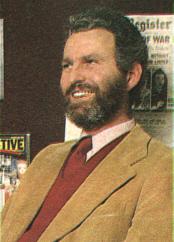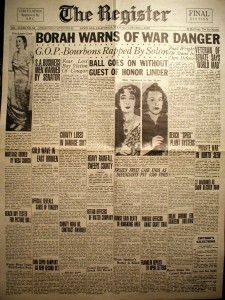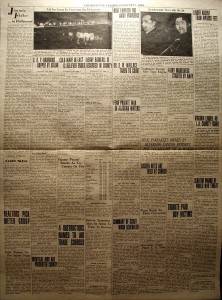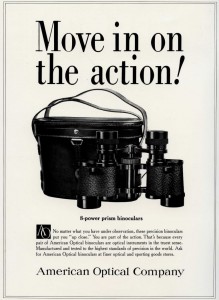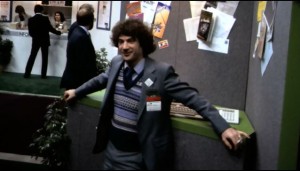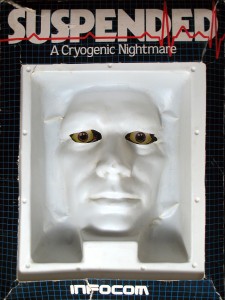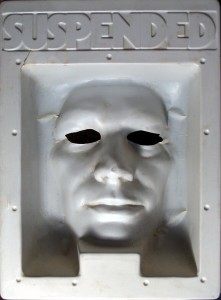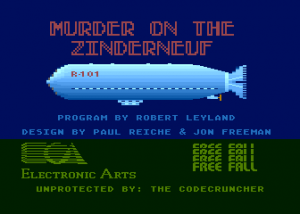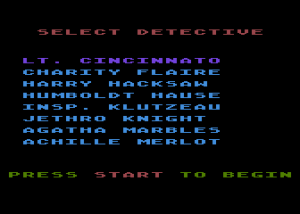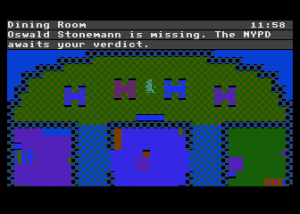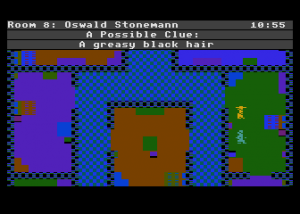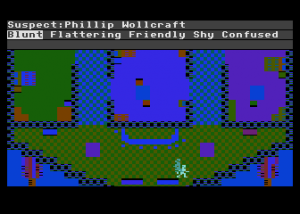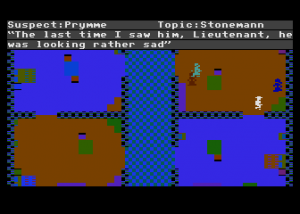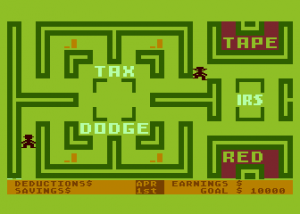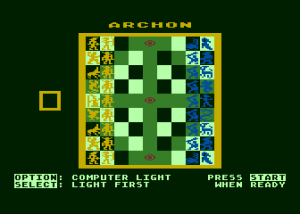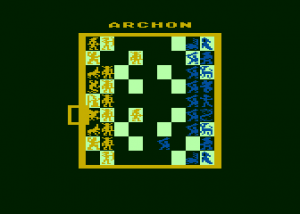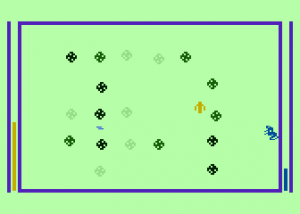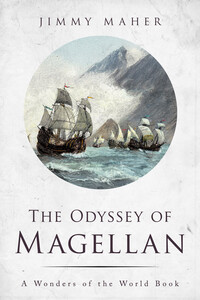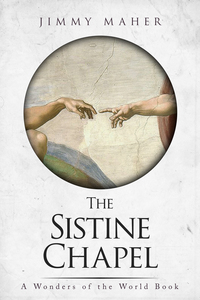When Mike Berlyn joined Infocom in the summer of 1982, he became one of the first trickles in a stream of new employees to join Joel Berez and Marc Blank inside the company’s spacious new offices in Cambridge, Massachusetts. Some of those who took up residence on Wheeler Street were from the original founding core. The vast majority, however, were true newcomers whose contributions would be enormous even if their names would often never become so well known as those of the original gang from MIT. Let’s try to remedy that just a bit now for at least one of these folks; we’ll make space for others in later articles.
The bedrock technologies upon which was built virtually everything Infocom later did were of course the Z-Machine virtual machine and the ZIL adventure-specific programming language designed by the founders — with by far the biggest contribution coming from Marc Blank — as the first substantive project of the new company back in 1979 and 1980. Yet Infocom struggled in those earliest years to actually get the Z-Machine onto the smorgasbord of incompatible microcomputers that was the PC market of the early 1980s. While they had a wealth of computer-science talent on tap to design such technology in the abstract, no one among the founders had any particular love for or, truth be told, unusual skill for hacking on micros. Stu Galley’s old slogan of “We hate micros!” still largely held sway. The one member of the original Zork team who did have a fondness for the little machines was Bruce Daniels, who decided to join Apple rather than Infocom; the company had to pay him as a contractor to implement the Z-Machine on the Apple II from his new home in California. As long as they remained staffed exclusively by refugees from the world of institutional computing, Infocom would be unable to fully take advantage of the Z-Machine. Enter one Dan Horn.
In 1982 Horn was working for Scott Adams’s Adventure International near Orlando, Florida, but also doing testing for many other companies, among them Infocom. An outgoing personality who wasn’t shy about sharing his ideas, he developed a good working relationship with Blank, which led to a full-fledged job offer, to come to Boston and set up a new division within Infocom dedicated just to porting and maintaining the Z-Machine on as many microcomputers as could support it. This would allow the founders to wash their hands of the whole business and just concentrate on the games themselves.
Horn’s “Micro Group” soon came to occupy a substantial portion of the offices, and were responsible for Infocom’s soon-to-be legendary ability to get their games onto more platforms more quickly than anyone else. At their peak, they supported more than twenty different incompatible systems, including a few soon-to-be orphans for which Infocom’s games were virtually the only commercial software available. A loft above the offices housed at least one example of every machine available for purchase at that time, along with a selection of prototypes sent directly from manufacturers who, in light of the popularity of the Infocom games and their reputation as masters of the quick port, sent them in the hopes that Infocom could have their full line available as soon as the machines hit the market. Their hopes were generally well-founded. In order to get their games onto the Apple Macintosh in time for its release, Horn’s team dumped entirely the prototype’s buggy pre-release operating system, replacing it with a window manager of their own. On release day a dozen or so Infocom games were the only ones available. A similar scenario was later repeated on machines like the Atari ST and the Commodore Amiga. Other, more celebrated employees may have written the games, but Horn’s group brought them to the world. As Horn said in his interview for Get Lamp, you can’t sell a lot of games for a $100,000-plus DEC minicomputer.
Speaking of which: in December of 1982 Infocom made a landmark purchase that signaled they had truly arrived as a company: their own DECSystem-20, the latest iteration of the PDP-10 architecture that had spawned Zork and still ran ZIL. Before this point Infocom had begged, borrowed, or leased time on various systems belonging to MIT or DEC itself. Now they had a machine of their own, one that would soon take a featured spot as the mysterious heart of the Infocom magic in articles written by the microcomputer journalists who visited the offices and reported what they found in the magazines of the day. “The electric bill for just the mighty DEC 2060 computer that blinks and hums away in the basement runs to $1500 a month,” wrote one awed visitor, conjuring images of one of Star Trek‘s mysterious planet-controlling computers run amok. In reality, the machine was far from exotic. It was in fact thoroughly typical gear in businesses and universities all over the country, an established everyday workhorse chosen precisely because the core of the company had been working with machines of this design for years. It was just that it normally existed in an entirely different world of computing, one of which hobbyists hacking at home on their Apple IIs or Commodore 64s had little knowledge.
What with the arrival of the DEC system and the establishment of the Micro Group, as 1983 began Infocom was poised to enter its classic era, that short, happy time when the business model and the technology were in place and in full flower and the company was churning along merrily, kicking out another bestselling title every few months. Infocom had gone a long way toward crafting the public image for which they’re still remembered already in 1982 with the aid of a wonderful partner, their advertising firm of G/R Copy. In 1983 they cemented their image as classy purveyors of games which eschewed childish graphics for the deeper, richer, more adult pleasures of text via the two best-crafted and (not coincidentally) best-remembered advertisements they would ever release.
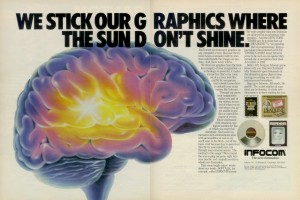
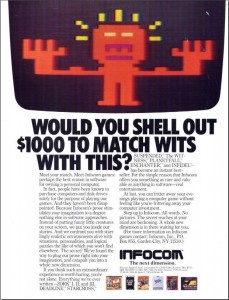
Yet that sense of focus, that absolute surety about who they were and what they were doing which they projected to the outside world was not always reflective of what was going on inside the company. Infocom finally came to the brave decision to double down on text only after a lot of serious internal debate. To understand why, we have to remember that already by 1982 few pure text adventures were still being sold in North America, and of them only those of Infocom were doing at all well commercially. The movement that On-Line Systems had begun with Mystery House and The Wizard and the Princess now dominated the industry. Even Scott Adams felt compelled to add pictures to his minimalist back-catalog, creating the SAGA line. Were Infocom’s games destined to ultimately suffer for their lack of pictures, or were they qualitatively different enough from the competition to survive on their own terms? That was the question Infocom’s management wrestled with.
Infocom was uncertain enough of the answer that they approached Penguin Software, riding high at the time in the wake of their hit Transylvania, to discuss the idea of a partnership, in which Penguin’s Antonio Antiochia (author of Transylvania) would make illustrations for the Infocom line. Antiochia was eager, but Mark Pelczarski, head of Penguin, was somewhat ambivalent. As he told me recently, he actually admired the extant Infocom approach greatly, and shuddered at the idea of Infocom trading their games’ sophistication for the lure of pictures. On the other hand, he was very aware of what the arrangement could do for his own company, and excited by the idea of working closely with the Infocom core, for whom he had immense personal and professional respect. And so the discussions proceeded amidst conflicted feelings on both sides. Within Infocom, the technical architects and game designers, following the example of Marc Blank, tended to line up against graphics, while the company’s emerging business and marketing sides believed them necessary to stay competitive.
In the end, the former opinion won the day, and negotiations with Penguin quietly petered out as G/R Copy set to work on the famous anti-graphics advertising campaign that did so much to define Infocom as they are still remembered today. If nothing else, Blank had compelling technical arguments on his side. Not only would pictures necessarily drain precious computing resources away from Infocom’s best-in-the-industry parsers, world models, and writing, but their entire ZIL- and Z-Machine-based development system was fundamentally unsuited to making games with pictures. The DEC terminals on which the games were actually written could display only text, which would leave as the only option somehow shoehorning pictures in at the interpreter level. This would play havoc with Infocom’s ability to get their games quickly onto such a variety of machines: while all of the target machines could easily accept input from the keyboard and display text in response, their graphics capabilities ranged from impressive to nonexistent, with each machine having its own set of strengths, weaknesses, and quirks. As Infocom soon realized from the discussions with Penguin, getting pictures onto even a small subset of platforms would be an immensely time-consuming, technically ugly exercise, if it could be done at all without ripping out the heart of what made Infocom Infocom, and would play to absolutely none of the company’s technical strengths. And even though everyone liked the folks at Penguin, Infocom as a company always preferred to do things in-house rather than depend on outside partners.
With the final decision made at last to buck the conventional market wisdom, Infocom’s audacious advertising in support of the choice proved so masterful that it not only sustained their own success but also gave rhetorical cover for a modest but noteworthy resurgence of all-text games from others. During the next few years, companies as large and commercially mainstream as Brøderbund and Electronic Arts would release pure-text adventures of their own, a development that would have been exceedingly unlikely without the example of Infocom to say that, yes, games without pictures can still sell (for the time being, anyway).
For the first couple of years following the split with Personal Software, Infocom relied heavily upon G/R Copy to craft not only their advertising but most of the face they showed to the outside world, including their packaging and even the names of their games. (The list of Infocom games that found their final name only when complete and in the final stages of package design and testing is surprisingly long.) In the summer of 1983, however, Infocom began to become less dependent on G/R, thanks to the return of a prodigal son, Mike Dornbrook. As you may remember, Dornbrook had left the Boston area two years before for an MBA program at the University of Chicago, taking his Zork Users Group with him. Since then he had invented InvisiClues and, working closely with friends inside Infocom proper, turned ZUG into a formidable operation. Now Infocom took Dornbrook back on in-house as “Product Manager,” a position that amounted to head of marketing and head of public relations. He brought with him the ZUG operation kit and kaboodle, including the maps and the InvisiClues and the trinkets that they sold as well as The New Zork Times newsletter and, most precious of all, a mailing list of some 20,000 members who formed the rapidly expanding heart of the Infocom fanbase. These were the people who bought every game, who evangelized to their friends, who thought of themselves as members of the Infocom “smart persons club.”
The New Zork Times continued without a pause, now as the official quarterly publication of Infocom itself, the most essential link between company and fans. Its pages were filled with some of the puff pieces and thinly veiled advertisements you might expect from a publication of this stripe, but always executed with wit and charm thanks to Dornbrook’s careful hand. There were also quizzes, jokes, and contests. But most precious to the fans was the picture the newsletter gave of life inside the company, a microcosmic world of clever, wacky people who all genuinely liked one another having a great time every day making great games and getting paid to do it. Fans devoured stories about the latest office shenanigans instigated by Dornbrook and Steve Meretzky, the two biggest jokesters in an office that seemed full of them; about the personal histories behind the various games; about the Infocom softball team’s epic duels with their arch-rivals (both on the field and in adventure gaming) at nearby Spinnaker Software.
The New Zork Times‘s picture of life inside Infocom was, at least during 1983 and 1984, quite accurate. The Wheeler Street offices were a genuinely happy place, a great place to be young, technically skilled and/or creative, and gainfully employed. As Graham Nelson wrote, the people who worked there “mostly look back on the heyday as a happy, one-time thing, like a summer romance.” Everyone worked hard, and often for long hours, but there was always something amusing going on: epic tournaments of Uno or Diplomacy; parties to celebrate this or that real or contrived occasion (management provided a party budget of $400 per week); running gags and practical jokes of all stripes; an in-house newsletter (InfoDope) that served as a sort of unexpurgated companion to the official New Zork Times; softball; crab races(!). It’s an overused metaphor, but calling Infocom a family is probably not overstating the case.
Infocom’s game-making operation was broadly divided into four divisions: the Micro Division that got the Z-Machine interpreters working and got the games deployed onto all those machines; quality control, consisting of a core of in-house testers who were also responsible for a larger network of outside volunteers who ensured that, beginning in 1983, Infocom’s new games were released in a much more polished state than those of earlier years, and that the older games were patched up to meet the new standards; Dornbrook’s marketing and PR people; and at the center of it all the so-called Imps (short for “Implementors,” of course) who actually created the games on the big DEC machine. This group, despite constituting a relatively small percentage of the people employed by Infocom, were the ones who got all the attention, who got their names on the boxes and in The New Zork Times and whom everyone from the press wanted to meet. There was some resentment of their status by others in the company, but not as much as you might expect, perhaps because there proved to be just enough mobility among the groups to give hope to an ambitious tester or interpreter coder that she could reach center stage and become an Imp; people from both groups did eventually author their own games. Inter-divisional resentment was also relieved via measures like the weekly Friday parties that brought the whole company together for a few hours to chitchat and discuss business and generally see how the other halves were living.
By the end of 1983, these groups added up to some thirty people, up from all of four full-timers at the time Mike Berlyn joined just eighteen months before. Annual sales increased at a similar rate, from about 100,000 games in 1982 to 450,000 in 1983. Infocom doubled the size of their catalog in 1983, releasing five new games. Every single one was a solid hit. Infocom was a dominant player, very likely the most respected and envied in the games industry of 1983 — even despite the splashy launch of Electronic Arts — and a veritable commercial juggernaut. How veritable, you ask? Well, below you see the bestseller charts of the biggest software distributor of the time, SoftSel, for the week of December 12, 1983.
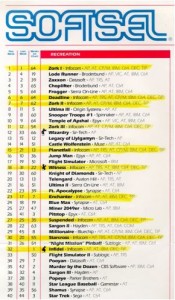
As you can see, every single one of the ten games Infocom has available is nestled securely inside the top 40, including six within the top 20, three within the top 10, and Zork I at number one. The whole thing rather reminds one of those Billboard charts from 1964 which seem to consist of pretty much all Beatles songs. The top four Infocom titles on the chart all date from earlier years, demonstrating the oft-remarked unusual staying power of Infocom’s catalog titles. Indeed, the continuing success of Zork I baffled even Infocom. It had increased its sales astronomically for every year on the market, approaching 100,000 all by itself in 1983, and sales would jump by more than 50% yet again in 1984.
All of this commercial success brought with it lots and lots of press attention. A big part of this came from the usual suspects inside the computer and gaming trade press, who positively clamored for permission to visit Wheeler Street and interview the inhabitants. But more surprising and (one suspects) more gratifying was the attention from some very unusual suspects. Beginning with a piece by Edward Rothstein for the New York Times Book Review, 1983 was the year that the mainstream media discovered Infocom. The quirky company made a great story for journalists looking for an angle from which to explore the home-computer explosion and the accompanying growth in entertainment software, which seemed to be displacing the old console-based videogames. Lengthy profiles followed in Time, The Washington Post, The Boston Globe Magazine, Discover. Marc Blank, unfailingly eloquent and charming, became Infocom’s go-to spokesman, sort of their equivalent to Electronic Arts’s Bill Budge. That almost became a full-time job in itself. “Sometimes it seems that all I do is interviews anymore,” he was soon good-naturedly sighing when asked about his role at the company. Like Budge, Blank even made it onto network television, demonstrating The Witness, Infocom’s mystery of 1983, for Diane Sawyer and Bill Kurtis on The CBS Morning News.
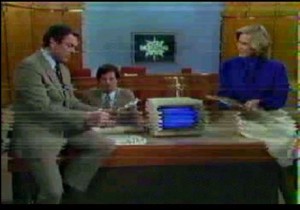
Most of these ambassadors from the mainstream tended to shy away from Infocom’s most popular game, Zork, in favor of the mysteries, the branch of genre literature most acceptable to an older, middlebrow audience who still generally saw fantasy and science fiction as disreputable stuff for the kids but weren’t averse to a bit of Agatha Christie. Likewise, the connection to Dungeons and Dragons, and even games in general, was deemphasized in favor of the games’ literary antecedents. For a lot of people inside and outside of Infocom, including the editors of SoftSide magazine who had started talking about the potential of “compunovels” back when Scott Adams was the only adventuring game in town, this kind of serious attention to the literary potential of the form must have represented quite a moment of triumph, even if not everyone was sold on the literary qualities of the extant games. (“By literary standards, Infocom’s stories are crude. The characters are two-dimensional, plots are forever clunking to a halt, and the writing tends to be sophomoric,” wrote Philip Elmer-De Witt in Time.) These writers also mostly avoided calling them “adventure games” in favor of “participatory novels,” “computer novels,” or, still considerably before Infocom would officially rebrand their games with the name, “interactive fiction.” It was truly press coverage to die for, which played perfectly into Infocom’s own advertising rhetoric of games for adult tastes and sensibilities. Some of these writers went much farther than Infocom ever officially would in laying claim to the games as a whole nascent new field of literature.
In the midst of all this heady success, there remained in the background the secret project that was really going to open the financial floodgates: the InfoBase, soon to be renamed Cornerstone.
As I’ve noted in earlier articles, Infocom had not been founded as a games company; Zork had merely been seen as a relatively quick first product to get them established and get some money flowing in. Even the early success of Zork I and II didn’t do a lot to change that. On January 12, 1982, Mort Rosenthal, Infocom’s brief-lived but extremely productive manager of marketing, presented to the board two possible strategic directions going forward: to continue to concentrate on games and “consumer software,” or to make a serious push into the business market while remaining a mere “presence” in the consumer market. The board, which included the chief architect of Infocom’s current success in games, Marc Blank, was hardly riven by internal conflict at this stage; they unanimously chose the latter course, tempted by a virgin microcomputer business market that had just been legitimized by the new IBM PC. Now the only question to answer was just what kind of a business product they wanted to create.
Meanwhile two old colleagues from the MIT Laboratory for Computer Science, Brian Berkowitz and Richard Ilson, were experimenting with database software. The leading microcomputer database of the time, Ashton-Tate’s dBase II, was powerful but notoriously difficult to use; one had to effectively learn a new, fiddly programming language to get anything useful out of it. Berkowitz and Ilson envisioned a database for ordinary people, simple and menu-driven, that could be quickly set up and used by shopkeepers, medical receptionists, even people looking to catalog a book or stamp collection at home. They felt they had identified a real market need, and when their ideas came to the attention of Infocom’s Al Vezza, Joel Berez, and Marc Blank, all of whom had worked with the pair and had great respect for their capabilities, Infocom agreed. In return, Infocom could offer Berkowitz and Ilson access to their virtual-machine technology developed for their games, which should let them bring their database easily and cheaply onto not just the new IBM PC but a plethora of other, minor platforms where the competition would be nonexistent. It all sounded perfect. In October of 1982, Berkowitz and Ilson were officially hired as the first two employees of Infocom’s new Business Products Division, to work on the so-called “InfoBase.”
Berkowitz and Ilson were both very talented programmers, but things didn’t proceed quite as neatly as the original plan might have implied. They found that it was hardly practical to expect to just sit down and write a database in ZIL and then run it on the Z-Machine, as both had been rather ruthlessly pruned of any functionality not directly useful to writing adventure games. At best these technologies could serve as building blocks and samples on the road to rolling their own, much more complex virtual machine and its associated development tools. Still, by August of 1983 the two had enough to show that the project was deemed viable in the view of Infocom’s five-man board of directors. They decided it was time to expand it from little more than a two-man research project to a full-fledged development effort.
Infocom was doing wonderfully financially, but to fund a major business-software effort like this one would nevertheless require much more money than they were bringing in. They would need loans and/or venture capital. Until now, Al Vezza, the man who had had the original idea of founding Infocom, had remained in his job at MIT, leaving the day-to-day running of the company to Joel Berez. Now it was decided that Vezza would come on full-time beginning that January, as soon as he could wrap up his duties at MIT. Further, under the belief that the older Vezza possessed a gravitas that would sway potential investors, he would replace Berez as CEO on that date.
It was here that the first signs of the internal stresses that would eventually splinter the company began to show. In the beginning it had more to do with personalities than strategic concerns. Many at Infocom, among them Mike Berlyn, Steve Meretzky, Mike Dornbrook, and Dan Horn, disliked the stodgy, academic, rather humorless Vezza intensely. They were not thrilled by the idea of him replacing the popular, easygoing Berez, who had put his future on the line and guided the company to its current success while Vezza hedged his bets and remained at MIT. Vezza, meanwhile, seemed to regard Infocom’s games and (some suspected) its game programmers as distasteful necessities to be dispensed with as soon as he could get a real software business started. Caught somewhere in the middle were Berez himself and Marc Blank, who maybe weren’t quite so excited as they had been eighteen months before about business software in light of Infocom’s current success in games but weren’t quite willing to directly challenge the older, imposing Vezza over the issue. After all, why couldn’t Infocom do both, and keep everyone happy? With Vezza so disinterested in games, Berez would effectively remain in day-to-day control of that part of the company anyway, just like it had always been.
And make no mistake, the business market looked tempting indeed. Shortly after Infocom themselves had moved into the building on Wheeler Street, a tiny startup called Lotus Software that was run by Mitch Kapor, an old acquaintance who had negotiated Infocom’s first contract to sell Zork through Personal Software, moved into another space inside the same building. On January 26, 1983, they released Lotus 1-2-3, a spreadsheet program designed to go head to head with the application that had largely built the business-software industry, VisiCalc. 1-2-3 outclassed VisiCalc so thoroughly that it all but destroyed it in the marketplace within months. Lotus made an incredible $53 million in 1983, and would triple those earnings the following year. Compared to success like that, the $6 million Infocom earned in 1983 seemed downright paltry. With an example of what a major business-software success story could be literally right next door, it’s little surprise that few at Infocom were willing to outright say no to Vezza’s schemes.
With dreams of Infocom as the next Lotus in his eyes, that December Vezza secured a $2 million loan from the Bank of Boston on very favorable terms, in return for stock options and a position on the board for Ray Stata, founder of Analog Devices. Should anyone have been counting, the board was now tilted four to two in favor of business over games, with Vezza, Stata, Chris Reeve, and the rather disinterested J.C.R. Licklider (who rarely bothered to show up at board meetings but gave his proxy to Reeve) on one side, and only Berez and Blank on the other, in spite of the fact that the vast majority of the company was still busy making games. With this first big injection of business-software capital and Vezza about to take the reins full-time, that would change in the new year.
If there were already grumbles about Vezza and the business-software initiative by the end of 1983, it should be understood that they were mild at this point. Infocom was staffed by a lot of young, talented people who had succeeded wildly at everything they had attempted thus far. Their little thirty-person business had a handsome bottom line, and they were being feted not just as commercial successes but as pioneers of a whole new form of interactive literature. Sure, they had worked hard, but it had also all come kind of easily to them. Having succeeded at everything else, why shouldn’t they succeed at business software? In spite of the money they spent on the database project during the year, they still finished 1983 with more than half-a-million in clear profits. All they could imagine ahead was more success, in an ever-expanding consumer market and, soon, a lucrative business market as well. They would have been shocked if you had told them that 1983 would be the last year Infocom would actually turn a profit, or that it would go down as the single happiest, most unblemished year in the company’s history. But for now let’s leave them to enjoy themselves at that pinnacle as we turn to the rest of the games of 1983 that helped to put them there.
(In addition to the links scattered through the article above, be sure to have a look at Down From the Top of its Game for more on the Infocom story from a business perspective.)
